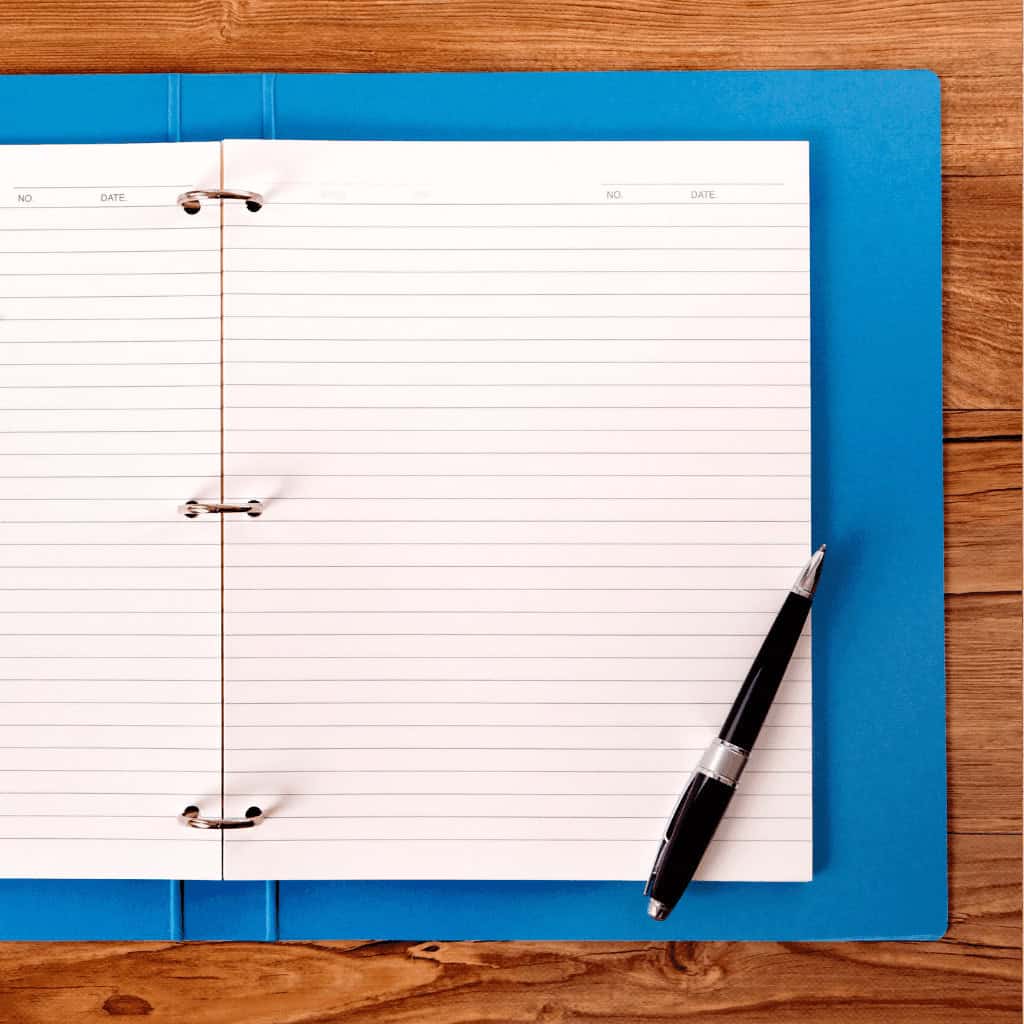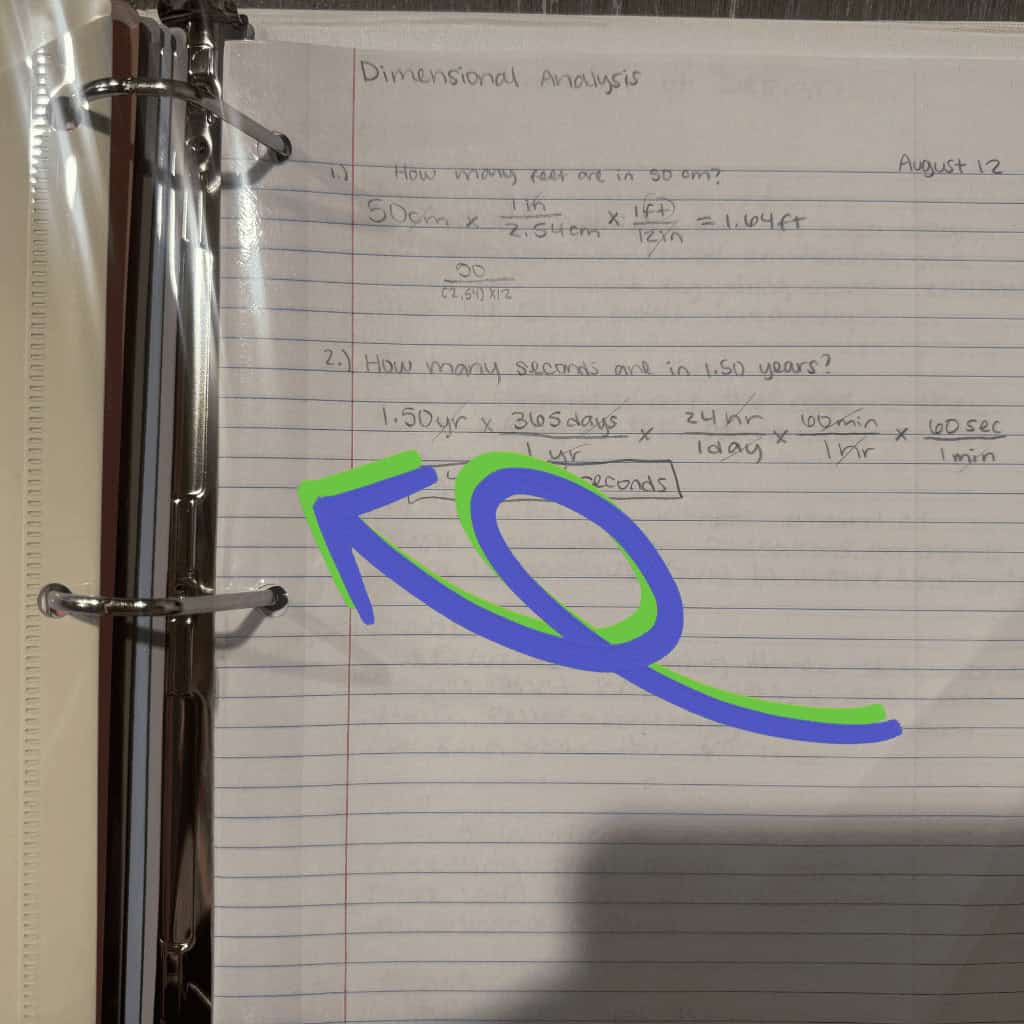In a world where so many students, in general, and teens with ADHD specifically, have executive function issues, as teachers (moms included), we make light of the one thing that can help.
Using a student binder and planner can support student organization. In our microschool, we directly teach the skill of maintaining a student binder and planner. We call this The Triumph Way.
However, in this article, we will mainly discuss the student binder.
Loose papers lead to zeros, and we can’t have that.
We want to make sure our students have a place for their homework, classwork, supplies, notebooks, and anything else they will use in the classroom.
Student binders are the perfect way to set up students for a successful school year and teach them the organizational skills they will need for life.
This system is used by some of the most studious students in high school and college.
Keep reading, and I’ll show you how I set up student binders and what I include in them to keep students organized all year!
Why Student Binders for Better Student Organization

When I teach my students the Triumph Way, I like for them to understand the why behind the importance of using this system. I need their buy-in for this to be successful.
Here are important reasons why the three-ring binder strategy is needed:
1. Reduces Overwhelm
- ADHD brains can feel overloaded by loose papers, multiple separate folders, or binders for each subject. It’s just too much! Having one central binder minimizes decision fatigue and reduces the chance of things getting lost.
2. Creates a Predictable System
- Students with ADHD thrive when there’s structure. A binder with clearly labeled sections creates a consistent routine for where things go, making it easier to find and file materials.
3. Supports Working Memory Challenges
- Because ADHD often impacts working memory, students may forget where they placed papers or what they need for homework. The binder serves as a visual and physical reminder system, keeping everything in one place.
4. Improves Time Management
- Searching for misplaced papers wastes valuable time. A binder system helps students quickly locate assignments and notes, leaving more time for studying and reducing frustration.
5. Builds Independence
- A structured binder fosters self-reliance. Students don’t have to depend as much on teachers or parents to track down materials—they can manage their own system with practice.
6. Helps Prioritize Tasks
- With dividers or color-coded sections, students can see at a glance what’s urgent (homework due today) versus what’s reference material (class notes). This helps combat the ADHD tendency to treat all tasks as equally important.
7. Reduces Anxiety
- Disorganization often leads to late or missing assignments, which can increase stress. A student binder system gives students a sense of control and confidence that they have what they need.
8. Encourages Good Habits
- Consistently using a binder teaches lifelong skills such as organization, responsibility, and planning, which benefit students far beyond school.
🗂 Setting Up the Three-Ring Student Binder Strategy
1. Choose the Right Student Binder
Use a “heavy-duty” three-ring binder that is at least 1.5 inches wide. If it’s 2-3 inches, that is even better.
Here are some of the ones that I recommend:
2. Color-Coding for Easy Visual Cues with Dividers
Use colored tabbed dividers with pockets to create sections. If you select the Five-Star, it already has tabbed dividers. You will have to ensure the amount fits your needs.
For example: Red = Math, Blue = Science, Green = English. This helps students with ADHD find the right section quickly without flipping through everything.
Some recommended sections are:
- Homework
- Math
- Science
- History
- Language Arts
- Subdivide for a Vocabulary Section
- Subdivide for a Writing Section
💡 **Tip**: For younger students, you may only need “Homework To Do,” “Homework Completed,”
💡 **Tip**: If you need to subdivide, use clear sheet protectors. These do not need pockets, but you can design a sheet with the name (Vocabulary Section) of the subdivided section and insert it.
3. Select Reinforced Loose-Leaf Paper Right for Your Students
Using reinforced loose-leaf papers prevents tears from frequent use. And if your student is using his/her binder correctly, they will be using it often.
Students flip through their binders a lot. Regular paper tears easily around the holes, but reinforced paper has extra strength to handle daily wear and tear.
Any brand will do; however, I do recommend using either of the following:
- Wide Rule for young students or those with handwriting difficulties.
- College Rule for older students and those who prefer smaller lines.
Once you have your selected paper, place a handful of sheets in each section behind the divider.

4. Choose a Monthly Printed Calendar or Yearly Planner
The main goal of using planners for students with executive function difficulties is to give them a clear, external system for remembering and managing tasks so they don’t have to rely only on their working memory.
Therefore, a calendar/planner makes it easier to see deadlines, plan ahead, and manage time. Instead of relying on memory—which can be tough for any of us.
A calendar provides a visual reminder of what’s coming up. It helps students keep track of homework, projects, and activities and reduces last-minute stress.
I generally like for the calendar/planner to go in front of the student binder before the dividers. You can also put a copy of their class schedule inside of the planner or use a sheet protector and put it directly behind it in the student’s binder.
5. Daily Routine for Using the Student Binder
At School:
- Write all notes and leave them in the appropriate section during each class. Notes should always be chronological in order. For example, if you take notes on 8/2 and then again on 8/5, those notes should go behind 8/2 and so on.
- Returned papers (homework, quizzes, tests, etc.) should be placed at the end of the section notes, right before the next section dividers. I suggest a handheld hole puncher for copy paper.
- Write assignments in the planner before leaving class.
At Home:
- Open the “Homework – To Do” section first to know what needs to be done or in the pocket of the divider of each section if you do not select to do a homework divider.
- Move finished work into “Homework – Completed” so it’s ready to turn in or in the pocket of the divider for its section.
End of the Day Check-In:
- Spend 5 minutes tidying the binder with a parent/teacher, making sure papers are in the right place. Older students should make this a habit to be done independently.
6. Weekly Clean-Out
- Once a week, go through the binder and ensure all papers are in their appropriate places. Any non-essential or scratch paper should be trashed.
This prevents the binder from getting too bulky and keeps it manageable.
7. Rewards & Motivation
Celebrate consistency! A sticker chart, extra screen time, or verbal praise can reinforce the habit of using the binder properly.
The Triumph Way works if you work it!!
The one student binder for better student organization works because it removes clutter, creates predictability, and gives students who learn differently a simple, repeatable routine they can practice until it becomes second nature.
0 Comments